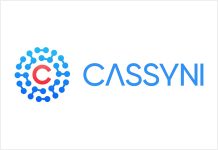
In the Nature Index 2020 Science Cities supplement, released today, Beijing is named as the top ‘science hotspot’, a position held since 2016, with Boston and New York retaining their standing in the top five. Alongside analysis of the global science hotspots, the Index also points to emerging trends in global research collaboration, providing an evidence-based framework for strategic decision-making by funders, policy makers and researchers as they navigate sustainable ways to move towards an increasingly open environment.
According to the Index, the Chinese capital is the top science city based on 2019 Share. Share is Nature Index’s key metric, calculated according to a fractional count of an institution’s, city’s or region’s contribution to articles published in the 82 journals tracked by the Index. Beijing’s contribution to its region’s Share, at 21%, is more than double that of any of the other top five cities in the Index – New York (10.3%), Boston (9.5%), San Francisco-San Jose (8.4%) and Shanghai (10.9%).
Beijing has seen increases in Share in chemistry (34.3%), Earth and environmental sciences (61.0%), life sciences (49.3%), and in physical sciences (30.1%) between 2015 and 2019, all of which have helped the Chinese capital retain the number one spot overall in 2019 and in all subjects except life sciences where it is fifth globally. Beijing is also home to the Chinese Academy of Sciences, which – at the institutional level – leads the Index in Share and acts as a central hub of Chinese scientific collaboration. Aside from the sustained investment in research and development due to a concentration of funding within the region, Beijing has also demonstrated growth in collaboration between researchers based there and in Shanghai, which is ranked number five among Nature Index science cities, having risen from 8th place with an increase in adjusted share of 38.6% since 2015.
New York and Boston tell a strong story for the US’s role in scientific development, coming second and third in the Index and retaining a strong lead in the life sciences, whilst also retaining a strong position second to Beijing and Shanghai as the leading city pair for collaborative output in the Nature Index. Their status in the Index’s top five is shored up by their geographic density of institutions, history and location which continue to attract researchers and partnerships. They remain attractive collaborative partners for cities both within and outside the US, with New York or Boston featuring in five of the ten most prolific city partnerships in the Index.
Beyond the growth in individual city outputs as leaders in scientific research, this Nature Index supplement also analyses two emerging trends as the acceleration of science globalisation continues: the spread of research hubs beyond the traditional concentrations of Boston, London and Paris, and a rapid increase in international collaborations. As science-funding systems and access to research findings continue to open up (both through open research and the increased mobility of researchers), and emerging economies strive to become more knowledge-based, a positive impact is being seen on the global scientific landscape. New funding streams have enabled emerging science cities to increase their share of global research output, which has contributed to wider international research collaboration and a progressive change both in research behaviour and collaboration between institutions, cities and, by proxy, regions.
David Swinbanks, Founder of the Nature Index, said:
“As we have seen since our first Nature Index Science Cities supplement in 2018, cities remain the ideal setting for scientific exploration. When looking at the long-term sustainability of global science, what happens locally matters just as much as the worldwide trends. This year’s supplement identifies emerging patterns of change within the relationships that determine a city’s scientific output, and identifies some of the challenges that policymakers and research institutions are now faced with. We hope that through our analysis of these global patterns, the Index can provide some insight into the critical issues that we need to pay attention to as we begin to move towards the changing landscape of research collaboration and open research as a result of the current global pandemic.”
The supplement showcases 100 cities in the Nature Index and examines the challenges and paths in research collaboration the world over, as these cities cultivate connections with global scientific hotspots. ‘Science Cities’ as referred to by Nature Index are those whose institutions collectively publish the most output in the 82 high-quality journals tracked by the Nature Index. The top five Nature Index science cities were also considered based on data from five different independent indices including the Arcadis Sustainable Cities Index, Kearney Global Cities Index, Innovation Cities Index, IMD Smart City Index and the Global Power City Index.
The full supplement can be read and accessed here. The supplement was produced with the financial support of the Beijing Municipal Government. Nature retains sole responsibility for all editorial content.




























